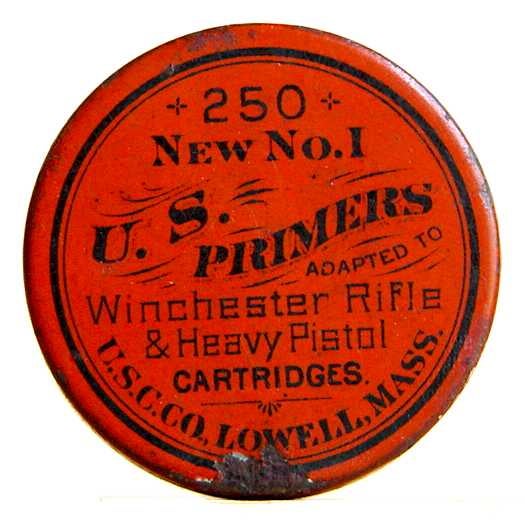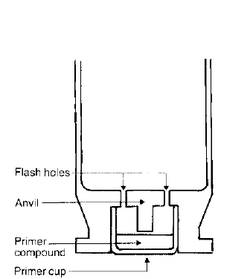Rifle Primers Things To Know Before You Buy
Wiki Article
The Of Small Pistol Primers
Table of ContentsReloading Primers Fundamentals Explained8 Easy Facts About Reloading Primers Shown6 Simple Techniques For Winchester PrimersUnknown Facts About Cci PrimersGetting My Winchester Primers To Work
Some muzzleloaders have guides like cap gun caps. https://www.ottawaks.gov/profile/andrewjaeger0217/profile.
Examples consist of pistol cartridges, rifle cartridges, and also shotgun shells. Larger weapons items on the other hand usually use electrical priming. In weapons the guides are regularly a different element, positioned inside the barrel to the back of the major propellant chargebut there are other examples of guns, including for instance some automated weapons, developed to shoot cartridges with integral electric primers.
Federal Primers for Beginners

With the arrival of hand-held guns, this ended up being an undesirable way of shooting a gun. Holding a burning stick while trying to pour a charge of black powder thoroughly down a barrel is unsafe, and also trying to hold the gun with one hand while at the same time intending at the target as well as looking for the touchhole makes it extremely difficult to fire precisely. The very first attempt to make the process of shooting a little arm much easier was the "matchlock".
The suit was a slow-burning fuse made from plant fibers that were taken in a remedy of nitrates, charcoal, and sulfur, and also dried out (https://www.jobsmotive.com/author/relodprim3rs/). This "slow-match" was ignited prior to the gun was required, and it would slowly melt, keeping a hot coal at the burning end. After the weapon was packed and also the touchhole topped with powder, the burning idea of the match was placed to make sure that the lock would bring it into call with the touchhole.
The Cci Primers PDFs
This brought the match down to the touchhole, firing up the powder. With mindful focus, the slow-burning suit can be kept melting for extended periods of time, as well as the use of the lock system made fairly precise fire possible. The next change in ignition modern technology was the "wheel-lock". It used a spring-loaded, serrated wheel which scrubed against an item of iron pyrite, comparable to a modern-day lighter.

The covered flashpan additionally provided some capability to withstand negative weather. rifle primers. Wind, rainfall, and damp weather condition would make a matchlock ineffective, however a wheel-lock that was packed as well as waterproofed with a little bit of grease around the flashpan can be terminated under a lot of problems. The wheel-lock enjoyed just a brief duration of appeal before being superseded by a less complex, extra robust style.
Rifle Primers for Dummies
As the name suggests, the flintlock used flint instead of iron pyrite. The flint was held in a spring-loaded arm, called the "dick" from the similarity of its activity to a pecking chicken. The cock rotated via about a 90-degree arc as well as was kept in the tensioned, or "cocked" setting by a trigger. https://www.goodreads.com/user/show/157009995-relodprim3rs.The "half-cock" placement held the penis halfway back, as well as made use of a deep notch so that drawing the trigger would not launch the dick. Half-cock was a safety and security setting, utilized when loading, storing or bring a loaded flintlock. The "full-cock" placement held the cock right back as well as was the placement from which the weapon was discharged.
It offered as both a flashpan cover as well as a steel striking surface area for the flint. The frizzen was pivoted and also spring-loaded to ensure that it would certainly secure the open or shut setting. When shut, the striking surface area was placed to ensure that the flint would certainly strike at the correct angle to produce a trigger.
The Ultimate Guide To Reloading Primers
The flintlock system was less complex as well as stronger than the wheel-lock, and also the flint and also steel provided a good, trusted source of ignition. The flintlock continued to be in military solution for over 200 years, as well as flintlocks are still made today for historical re-enactments as well as muzzle-loading target competition, and for seekers that delight in the extra obstacle that the flintlock gives.By the middle of the 19th century, the percussion or caplock system was well established., as it was less complex as well as a lot more reputable than the flintlock.
The flashpan and also frizzen were removed and also replaced by a small, hollow horizontal cylinder (drum) screwed into the bored-out and also touched flash opening and also bring a "nipple" over which the cap could be fitted. A "hammer" which additionally had half-cock (for loading and also using the cap) and also full-cock placements replaced the dick.
Report this wiki page